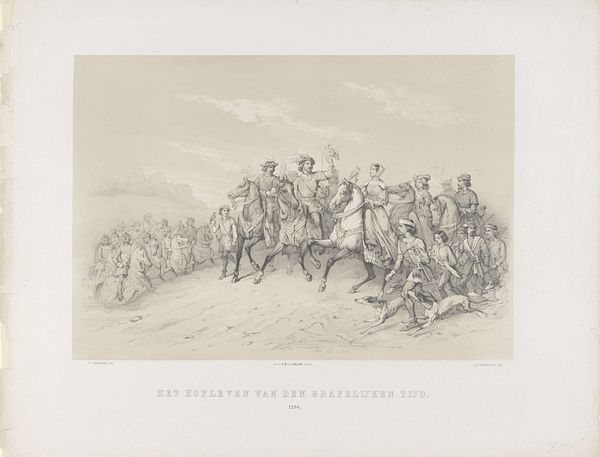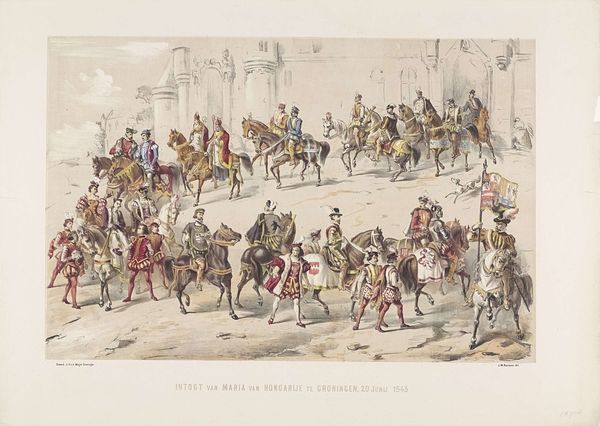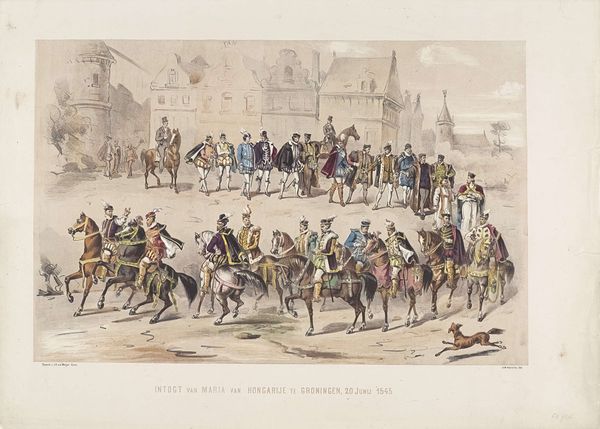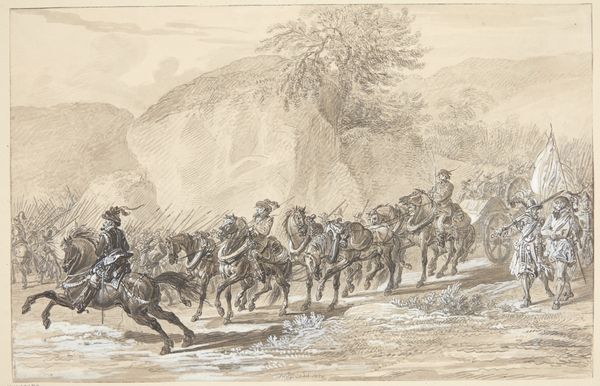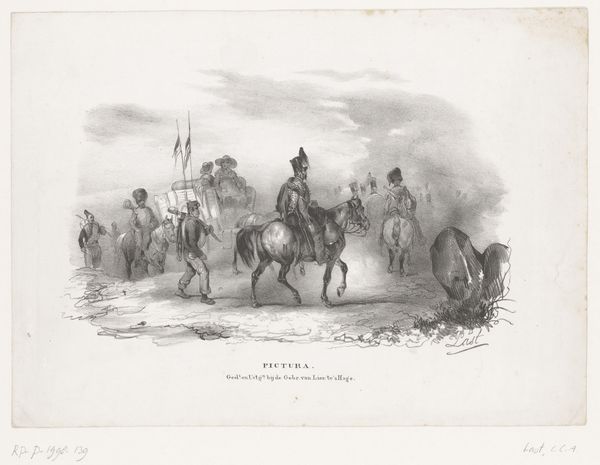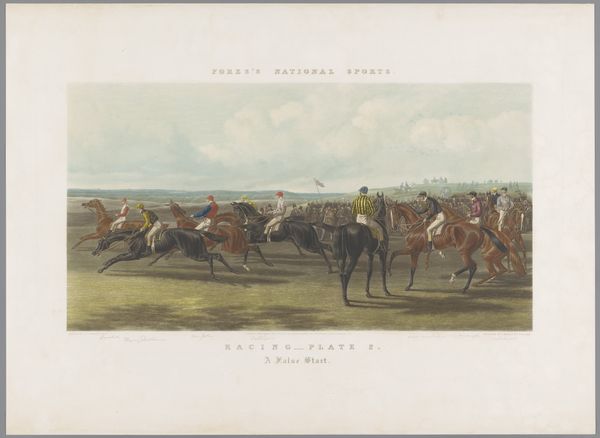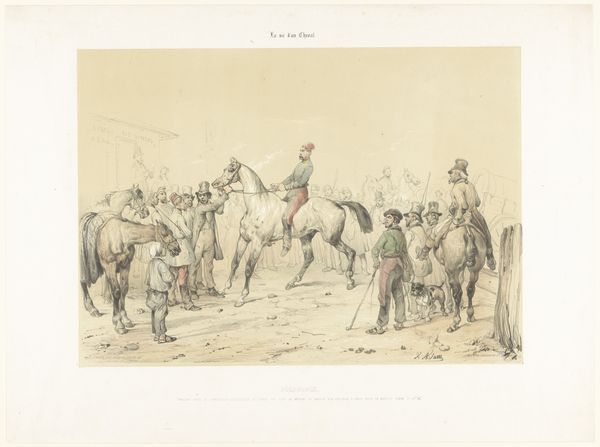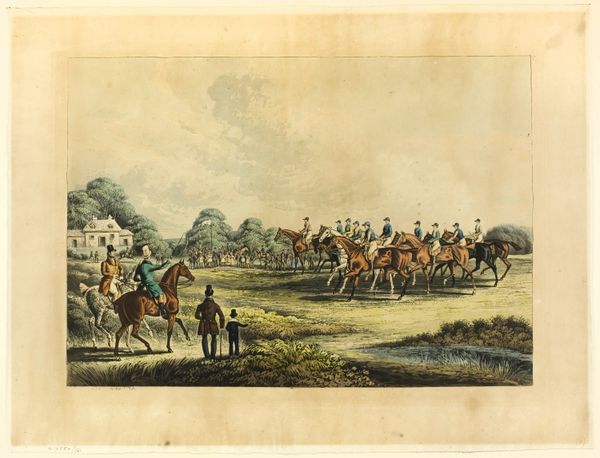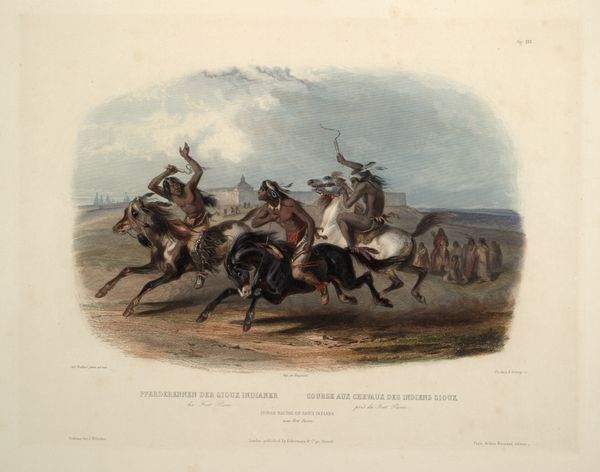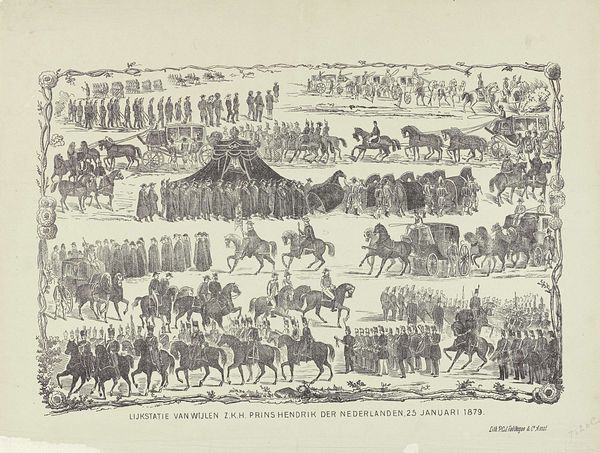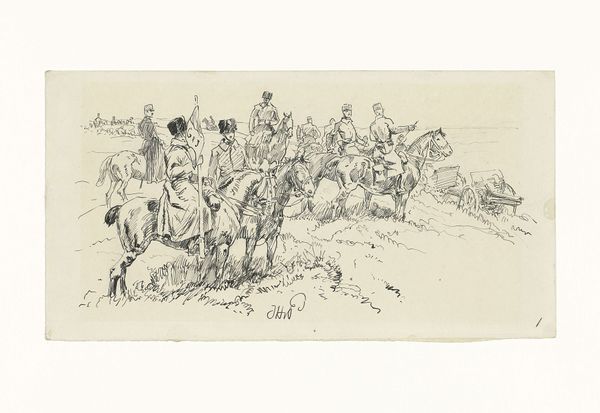
Dimensions: height 620 mm, width 870 mm
Copyright: Rijks Museum: Open Domain
Curator: This lithograph is entitled “Groningse Maskerade (vierde groep), 1864.” The work recreates a historical moment, specifically depicting Maria van Hongarije's entry into Groningen in 1545. Editor: My initial reaction is one of formality. There's such deliberate staging; a procession entering a city. I am struck by the power dynamics visually expressed through elevation: individuals on horseback physically dominate those on foot. Curator: Exactly! The artist recreates an event fraught with political and social implications, highlighting the performance of power and the construction of historical memory. Think about the Netherlands in 1864 - grappling with its own identity after a period of upheaval. To visualize Maria of Hungary entering Groningen provides a romanticized link to a powerful past, and it implicitly comments on contemporary anxieties about national identity and leadership. Editor: Visually, I'm interested in how each figure is so painstakingly rendered. I am fascinated by the details – the intricate costuming, the armor. The repetition of forms – the horses, the marching figures – contributes to this feeling of ceremony, a ritual display of power and authority that extends far beyond simple commemoration. Do you feel the costuming represents how far the artwork is removed from everyday existence and represents its timeless nature? Curator: The costumes are definitely central. By carefully depicting the attire of the 16th century, the artist signals a desire to resurrect and legitimize a specific historical narrative. Consider how representations of historical figures contribute to a broader discussion of governance and the burdens carried when claiming to speak on behalf of an imagined community. Editor: It makes me wonder about how cultural memory and tradition impact the present and the weight the present places upon its ancestors. Are there echoes in Dutch symbolic visual vocabulary of contemporary anxieties and aspirations for its people? Curator: Absolutely. It prompts us to consider whose stories get told and how their visual representation serves distinct political goals. What stories get the lithograph treatment and which do not, eh? Editor: Considering the depth here and cultural meaning for its contemporary audiences makes me think about art's enduring connection to historical events and societal values. Thank you for taking me down the streets of Groningen. Curator: Likewise, the iconographical density has made me think about why such images endure and what role they play in affirming national identity. Thank you.
Comments
No comments
Be the first to comment and join the conversation on the ultimate creative platform.
